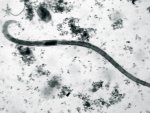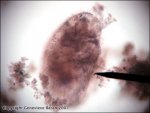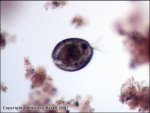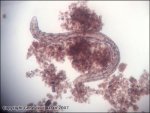ziggypie
 Axolotl Enthusiast
Axolotl Enthusiast
- Joined
- Jun 6, 2007
- Messages
- 29
- Reaction score
- 1
- Points
- 0
- Location
- New York, USA
- Country
- United States
It's odd to say, but this looks like either some sort of Cestode, or a larval form of something much bigger than anything I have in the tank (save the Axolotls and the fake decor). I took this picture from a dissecting scope, I was silly and forgot to record the power, but I think it was between 10 and 20x (obviously no ocular power). If it helps, that blurb that you see next to it is an ostracod crustacean ~0.3 mm. Thank you!








